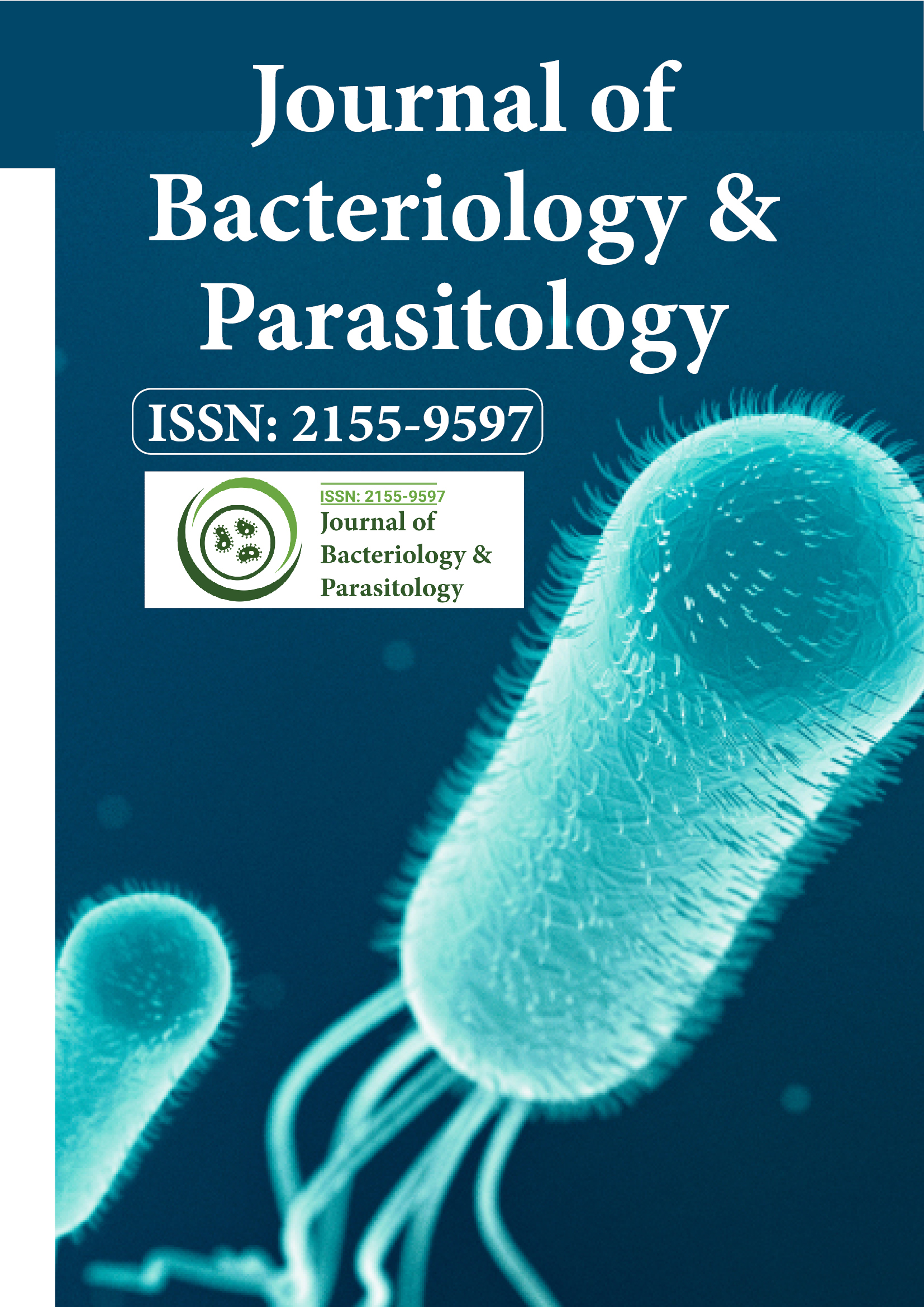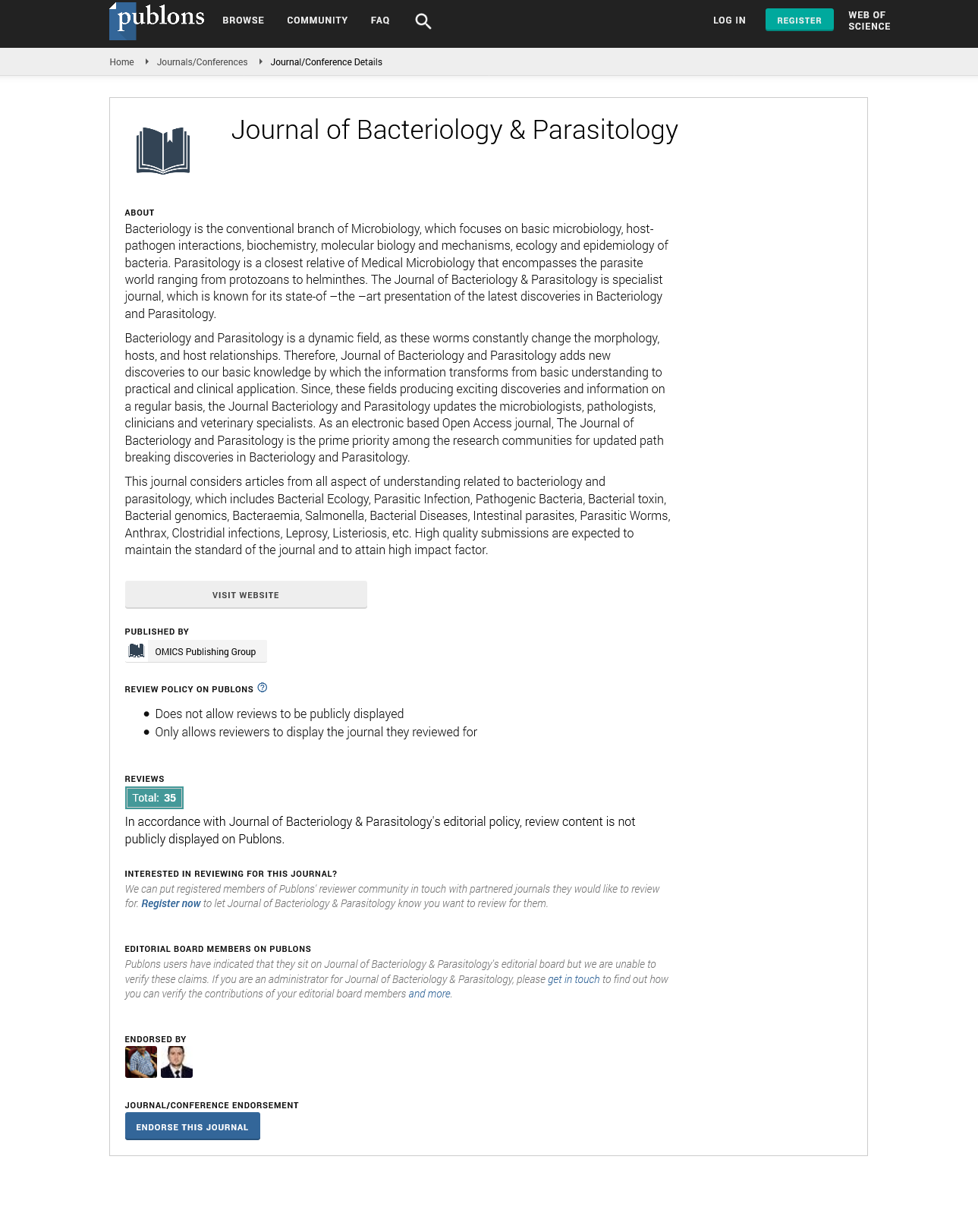Indexed In
- Open J Gate
- Genamics JournalSeek
- Academic Keys
- JournalTOCs
- ResearchBible
- Ulrich's Periodicals Directory
- Access to Global Online Research in Agriculture (AGORA)
- Electronic Journals Library
- RefSeek
- Hamdard University
- EBSCO A-Z
- OCLC- WorldCat
- SWB online catalog
- Virtual Library of Biology (vifabio)
- Publons
- MIAR
- Geneva Foundation for Medical Education and Research
- Euro Pub
- Google Scholar
Useful Links
Share This Page
Journal Flyer

Open Access Journals
- Agri and Aquaculture
- Biochemistry
- Bioinformatics & Systems Biology
- Business & Management
- Chemistry
- Clinical Sciences
- Engineering
- Food & Nutrition
- General Science
- Genetics & Molecular Biology
- Immunology & Microbiology
- Medical Sciences
- Neuroscience & Psychology
- Nursing & Health Care
- Pharmaceutical Sciences
Commentary - (2025) Volume 16, Issue 3
Bacterial Genetics and Horizontal Gene Transfer in Pathogen Evolution
Lukas Meier*Received: 26-May-2025, Manuscript No. JBP-25-30040; Editor assigned: 28-May-2025, Pre QC No. JBP-25-30040; Reviewed: 11-Jun-2025, QC No. JBP-25-30040; Revised: 18-Jun-2025, Manuscript No. JBP-25-30040; Published: 25-Jun-2025, DOI: 10.35248/2155-9597.25.16.547
Description
Bacterial species evolve rapidly. Gene changes may arise from mutation or from transfer of genetic elements across species or strains. Horizontal gene exchange by plasmids, transposons, integrative conjugative elements or bacteriophages allows bacteria to acquire new traits such as resistance to antimicrobial drugs, enhanced virulence, metabolic capacities for new substrates, or ability to survive hostile environments. These mechanisms allow adaptation to selective pressures such as antibiotic use, immune response, or competition in mixed microbial communities.
In plasmid transfer, donor bacteria carry plasmids encoding beneficial genes; through conjugation, the plasmid moves into recipient cells. Transposons may move within or among plasmids and chromosomes, carrying genes for toxin production or drug resistance. Phages sometimes act as vehicles: Lysogenic phages integrate into bacterial genome, bringing with them genes that may alter host behavior in some cases increasing virulence. For instance, Shiga toxin genes in E. coli derive from phage insertion.
Mutation events also matter: single nucleotide changes may change active site of enzyme targeted by antibiotic; regulatory mutations may increase expression of efflux pumps. Copy number variation or gene duplication may increase production of defensive proteins. Under pressure from antibiotics, bacteria carrying such mutations survive and propagate.
Interactions among bacteria in mixed communities, including commensals, environmental species and pathogens, create opportunities for gene transfer. Soil bacteria exposed to waste containing antibiotics may exchange resistance genes; bacteria in human gut may swap plasmids with transient pathogens; hospital environment provides surfaces where different species come into contact.
Consequences include pathogen strains that resist lastâ?resort drugs, produce more potent toxins, or survive in adverse conditions such as low oxygen, high pH, or antiseptic agents. Treatment becomes difficult when standard antibiotics fail; therapy must use combinations, novel agents, or sometimes experimental drugs. Monitoring resistance gene presence in clinical isolates, environmental samples, or animal reservoirs gives early warning.
Diagnostic methods include sequencing bacterial isolates, plasmid profiling, PCR detection of known resistance or virulence genes, phenotypic tests for drug sensitivity. Genomewide association studies help link genotypes with clinical outcomes. Wastewater surveillance may detect community levels of resistance genes.
Preventive measures include antibiotic stewardship, limiting use in agriculture, improving hygiene to reduce disease incidence, reducing environmental antibiotic contamination, and design of materials or surfaces that prevent bacterial colonization or gene exchange. Hospital protocols to limit wound and catheter infections reduce opportunity for bacteria exchange in communities.
Conclusion
Vaccine development may reduce disease by specific bacteria, relieving need for antibiotics and hence slowing selection. Development of inhibitors of plasmid replication or transfer, or of blockers of conjugation mechanisms, is under investigation. Phage therapy may target specific bacteria without broad disruption of microbiota and without selecting broad resistance. Understanding bacterial genetics and exchange of genetic material is fundamental for managing modern bacterial disease. Scientists, clinicians, public health officials must observe how pathogens adapt, how human actions affect selection pressures, and adjust practices accordingly. Through surveillance, regulation, innovation, and prudent medical care, possibility of limiting harmful bacterial evolution improves.
Citation: Meier L (2025). Bacterial Genetics and Horizontal Gene Transfer in Pathogen Evolution. J Bacteriol Parasitol. 16:547.
Copyright: © 2025 Meier L. This is an open-access article distributed under the terms of the Creative Commons Attribution License, which permits unrestricted use, distribution and reproduction in any medium, provided the original author and source are credited.

